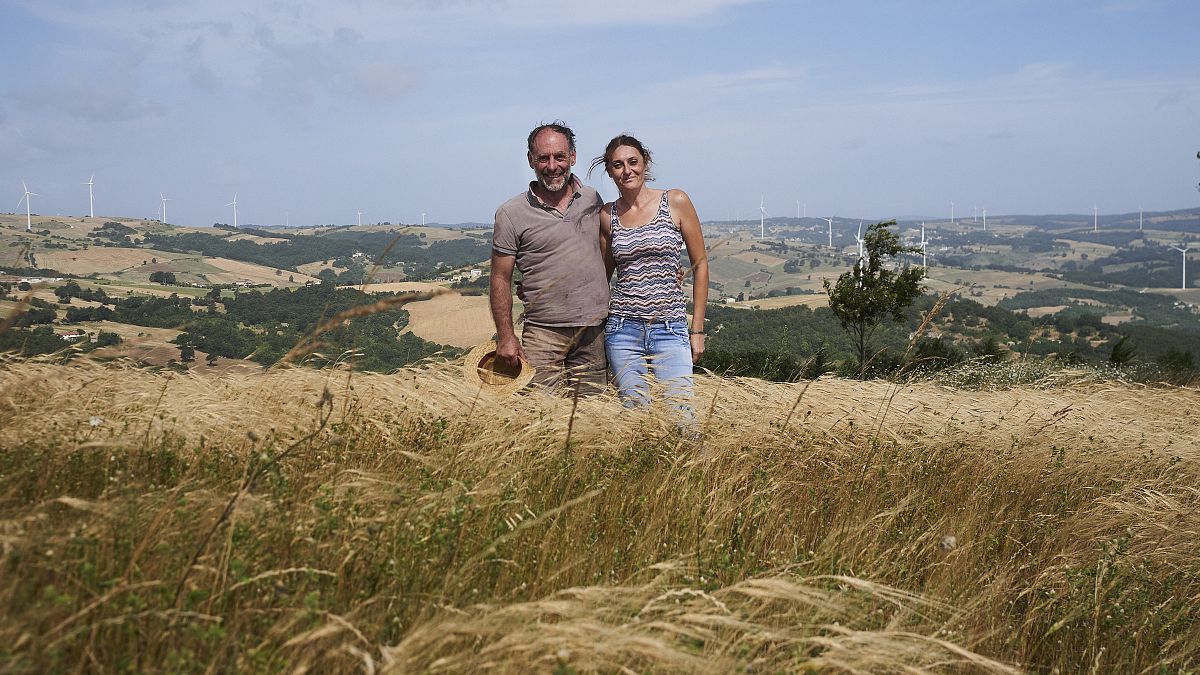Bringing back ancient grains can help family farmers in the face of climate change.
In a climate-vulnerable world, growing food is not as easy as it once was. Rising temperatures disrupt farming schedules, drought leaves the ground parched, or flooding wipes away crops completely.
The race is on to find ways of making farming sustainable, as the need for food only increases each year thanks to the growing global population.
Food justice groups argue that for real food security, instead of relying on the current ‘just-in-time’ (JIT) model that’s built for big food corporations, we need small, local systems that have agroecology principles at their heart.
Others say current mechanisms are not sufficient. La Vía Campesina (LVC), a 30-year-old movement of peasants and farmers founded based in France, highlighted that the recent COP29 talks focused on “false solutions, including carbon markets, offset schemes, genetically engineered crops, geoengineering megaprojects, ‘Climate-Smart Agriculture,’ and ‘Nature-Based Solutions,’ are promoted as climate mitigation tools but fail to address the root causes of the crisis.”
So what are these root causes? Environmental degradation, the erosion of cultural rights, human rights violations, and ancestral and territorial rights, according to LVC.
How climate change is hurting food production across Europe
“We see climate change affecting our fields in different contexts across Europe – floods, drought and even a very strange climate, such as hot winters and cold springs”, says Francesco Sottile, a professor of biodiversity in agrosystems at the University of Palermo and member of Slow Food Italy’s executive board.
“In the Mediterranean, in the south of Italy, Spain, and Greece, we are facing a severe drought, and biodiversity is the answer to mitigate climate change. It’s the strongest tool to ensure we can adapt year by year to the changing climate we are seeing,” explains Sottile.
He says going back to ancient, resilient grains can be one solution.
“During our last season in Sicily, for example, our wheat production that uses very traditional, old regional varieties – including ‘timilia’ durum wheat and the soft wheat ‘maiorca’, which are perhaps less productive crops than most industrial varieties, were able to mitigate drought problems and produce and give seeds, while the industrial varieties failed”.
“Likewise, when our soils adopt agroecological principles and are the basis of production management,” says Sottile, “we see evidence of a higher capacity to resist floods, as lands drain water and mitigate soil erosion on the surface.”
Food security at the grassroots level
Since 1996, Slow Food’s Ark of Taste has been documenting all the traditional, small-scale foods that are at risk of extinction worldwide. These include endangered and wild animal breeds of sheep, cattle, and pigs, heritage fruit and vegetable varieties, cheeses, grains, jams, and sweets.
Cataloguing such a collection gives these unique foods a chance to have their stories told and do something practical so they can be rediscovered and “put back on the table”.
The products have been crowdsourced with submissions from all over the world.
Using strict selection criteria, The Ark of Taste now holds more than 6,000 products that need protection before disappearing forever from local communities. 589 were added in just the last two years.
The Ark of Taste, Sottile tells Euronews Green, is “an amazing catalogue as they can preserve the environment and soil and fight climate change.”
“When we decide to nominate and include a specific variety or archetype – for example, wheat, vegetables or fruit trees in central Europe – they come from an important and fundamental climate mitigation perspective, with agroecology principles as the management approach.”
Food sovereignty could be a climate-resilient solution
Despite thousands of cereal varieties, 60 per cent of global food supplies are based on just three cereals: wheat, rice and maize, according to the UN’s Food and Agriculture Organization (FAO).
Food sovereignty, a term coined by La Vía Campesina, means communities being in control of the way their food is produced, traded, and consumed. The organisation advocates for family farm-based sustainable agriculture that protects the “existence and culture of Indigenous Peoples, traditional communities, and peasants.”
“What we’ve seen in Europe is that soils with coverage in terms of permanent grassland are usually really able to mitigate the effect of climate change as there is huge biodiversity in this soil,” Sottile explains.
“The problem is that in order to maintain these grassland environments, we also need an open-air pasture next to it for traditional animal farming that is then fed by the grass so that the positive effect is also in the milk, cheese, and meat.”

